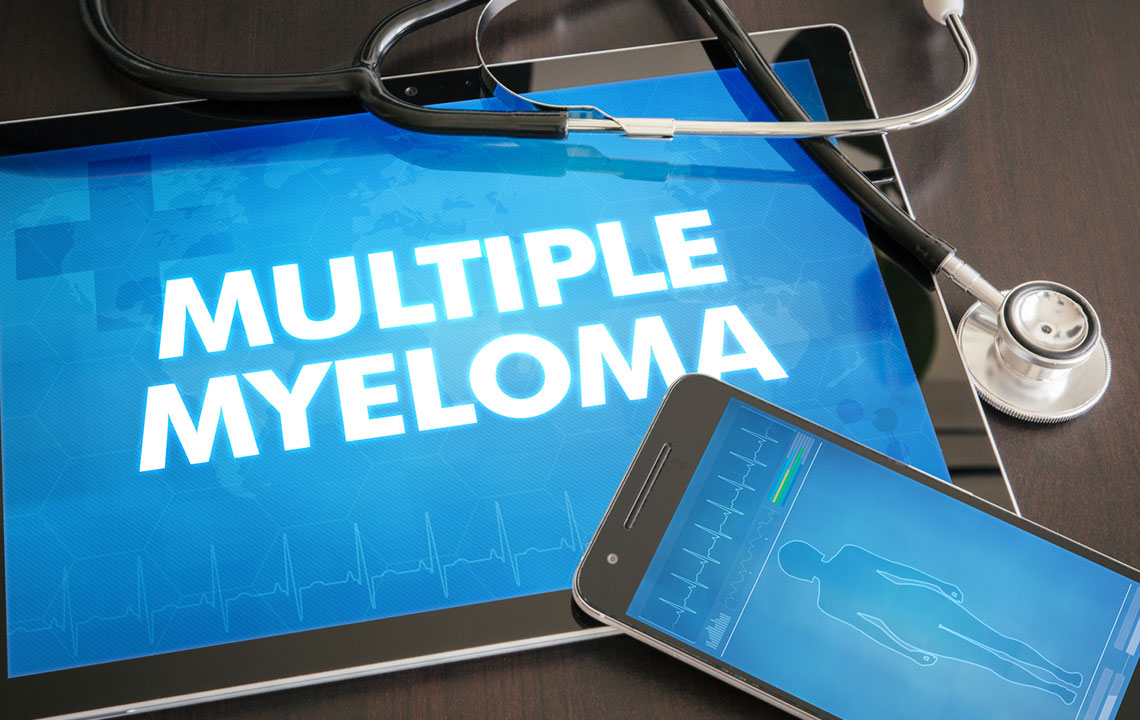Causes, Risk Factors, and Prevention of Multiple Myeloma
Our bodies are made up of different kinds of cells. Blood cells are an important type of cell that is further bifurcated into three parts, namely white blood cells, red blood cells, and platelets. Each type of blood cell plays an essential role in the human body. Red blood cells remove carbon dioxide from the body and carry oxygen to the tissues.

Plasma cells and multiple myeloma
Plasma cells produce antibodies that fight antigens, otherwise known as harmful foreign substances. These cells are normally present in the bone marrow in a limited number, but they can turn into a tumor upon abnormal cell multiplication. The tumor can turn cancerous and may cause multiple myeloma, a type of blood cancer. While scientists do not know the exact cause of multiple myeloma, they have conducted studies on how certain DNA changes can cause the plasma cells to turn cancerous and form a tumor.
Multiple myeloma can lead to a loss of red blood cells, causing anemia. It can also decrease the number of platelets in the blood, which causes increased bleeding and bruising. Multiple myeloma even causes a shortage of white blood cells that leads to problems in fighting infections.
Medical researchers and doctors who have been studying multiple myeloma are looking for a cure and methods to prevent this disease. Preventing it becomes less challenging when one knows the risk factors and early signs of cancer. Identifying the risk factors and taking the right measures to eliminate the risk can be an effective way to prevent multiple myeloma.
Risk factors
Obesity and family history are some common risk factors seen in most cases of multiple myeloma. People with a history of monoclonal gammopathy of undetermined significance (MGUS) can also be at an increased risk of developing the disease. Exposure to radiation is another factor that can increase the risk of multiple myeloma.
As people get older, they may face an increased risk of developing multiple myeloma as most reported cases of this disease have been among people over the age of 65.
Along with age, gender and race also play a role in increasing one’s risk of developing cancer as men are slightly more prone to this disease than women. Additionally, this disease is more common among African Americans than Caucasians.
Preventive measures
Preventing the progression of MGUS: As MGUS increases an individual’s risk of developing multiple myeloma, one can implement measures to prevent the progression of MGUS to lower the risk of multiple myeloma.
Early screening and diagnosis: An early diagnosis of multiple myeloma can help doctors provide the right treatment, like immunotherapy, to prevent the disease from spreading to other organs.
Targeted therapy: SDF-1stromal cell-derived factor-1 is a strategy that can be used by doctors to prevent the disruptive colonization of the bone marrow by multiple myeloma. But it is important to get an early diagnosis to implement this preventive measure.
Paying attention to signs and symptoms: While the causes of multiple myeloma are not known, there are several signs and symptoms that can be identified for early diagnosis. Below are some common early signs and symptoms that should not be missed.
- Problems in the bones like bone pain, especially pain in the back, hips, and skull, along with bone weakness, and broken or fractured bones due to minor stress or injury.
- Problems that arise due to low blood counts like anemia, leukopenia, and thrombocytopenia, where the blood platelet counts are low, causing excess bleeding even in case of minor cuts or bruises.
- Increased blood levels of calcium, which leads to extreme thirst, excess urination, dehydration, kidney problems, loss of appetite, weakness, and confusion.
- Signs related to the nervous system like sudden back pain, numbness in legs, muscle weakness, especially weakness in the leg muscles.
Dietary changes: Diet can help prevent or cause a lot of diseases, including cancer. There are several foods that are linked with a lowered risk of multiple myeloma, like cooked tomatoes, cruciferous vegetables, foods rich in vitamins, especially vitamin A, and fresh fish.
On the other hand, there are foods that increase one’s risk of developing multiple myeloma. These foods include processed and packaged food, ice creams, cream soups, artificially flavored juices, and artificially sweetened fruits.
So, paying attention to one’s diet is important to combat the risk of developing multiple myeloma. It is also important to list down all the foods one should and should not eat and follow it on a regular basis. People with a high risk of cancer should stop eating red meats and start following a diet that consists of whole foods and fresh fruits. Cutting down on alcohol consumption and smoking can help prevent the development of multiple myeloma.


